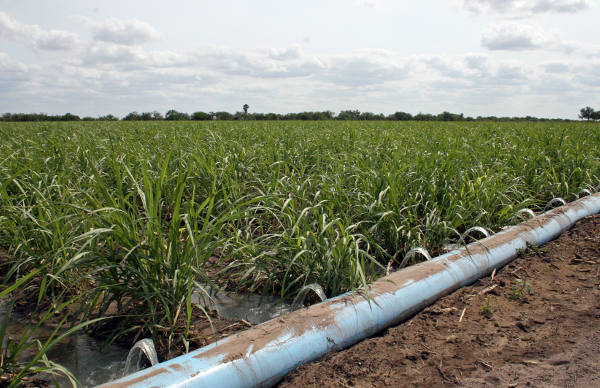March 12, 2013

In the Lower Rio Grande Valley, water shortages are shaping up as a crisis not just for farmers but also for entire cities this year, said a Texas A&M AgriLife Extension Service expert.
In 2009, the area experienced the worst drought in decades, as did much of the state, but this year is shaping up to be much worse for area residents, said Dr. Guy Fipps, AgriLife Extension irrigation engineer, College Station.
“In 2009, there was a drought, but there was plenty of water in the reservoir systems, so there was irrigation water,” he said. “This year, there is almost no water in the reservoir systems.”
The Lower Rio Grande Valley, commonly referred to as just “The Valley,” encompasses the southernmost tip of South Texas. More than 1 million people live in The Valley, according to AgriLife Extension sources. There are row crops commonly grown, such as cotton, sugarcane, grain sorghum and corn, as well as large acreages of commercial vegetable crops such as onions, spinach, potatoes, and many others, as well as citrus.
All crops and municipal areas are highly dependent upon water from the Rio Grande, Fipps said. There are a few wells, but they tend to be very salty.
“Most of the irrigation districts have informed the farmers that they will have one or two irrigation this year,” he said. “Three of the districts have informed their municipal water contracts that they will likely be out of water by April or May and will not be able to supply municipal water. This is quite serious.”
There are also international political issues involved, as by treaty Mexico and the U.S. share the water of the Rio Grande.
“The U.S. side is putting pressure on Mexico to get them to release some of the water they owe the U.S. so it can be used to maintain municipal water supplies this year,” Fipps said. “So it should be very interesting to see how this unfolds in the next two or three months.”
Fipps’ work in the area has concentrated in recent years to modernize canals to conserve water, he said.
“Conveyance efficiencies vary from as much as 90 percent in one of the smaller irrigation districts, to as low as 60 percent in many of the larger ones,” he said. “That means you have anywhere from 10 to 40 percent of the water lost before it reaches the fields.”
More information on the current Texas drought and wildfire alerts can be found on the AgriLife Extension Agricultural Drought Task Force website at http://agrilife.tamu.edu/drought/.
If you are enjoying reading this article, please check out Southwest Farm Press Daily to get the latest news delivered to your inbox.
You may also like:
Crop insurance is good investment; claims of abuse overstated
Not much hope Mexico will release water
Advancing the frontier of sustainable agriculture in the Southwest
You May Also Like




